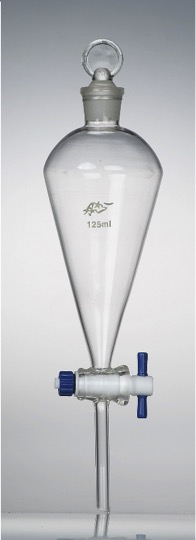D.9 Drug detection & analysis
Written specifically for students to provide help and support for the IB Diploma chemistry programme this page provides full coverage of the syllabus content of Option D - sub topic D.9. It encourages you to think critically and provides many questions with full worked answers so that you can monitor and improve your knowledge and understanding.
.png)
 Learning outcomes
Learning outcomes
.png) After studying this topic you should be able to:
After studying this topic you should be able to:
Understand:
- Infrared spectroscopy, mass spectroscopy and proton NMR can all be used to analyse and identify organic structures.
- The presence of alcohol in a breath sample can be detected either by using a a redox reaction or by a breathalyser that uses a fuel cell.
- Determine an organic structure by interpreting a variety of analytical spectra (IR, mass spectroscopy and 1H NMR).
- Describe the process of extraction and purification of an organic product. This should cover fractional distillation, Raoult’s law, and the properties on which extractions are based.
- Explain the relationship between organic structure and solubility.
- Describe how chromatography and mass spectroscopy can be used to detect the presence of steroids in sport.
- Explain how alcohol can be detected by using a breathalyzer.
Relationships & vocabulary
Nature of science
Advances in technology (IR, NMR and MS) which enable very small amounts of substances to be analysed comprehensively have assisted in drug detection, identification, isolation and purification.International-mindedness
Cheating by taking illegal or banned drugs in sport is an international problem.Vocabulary
| Raoult's law | partition | gas-liquid chromatography | GC/MS | breathalyzer |
Learning slides
You can use this slide gallery for learning or for reviewing concepts and information. It covers all the key points in the syllabus for this sub-topic.
Something to think about
One of the quirks of the current syllabus is that sometimes it is not exactly clear what can be examined. Much of this sub-topic is self-evident but one problem occurs in the ‘Applications and skills’ where it states:
“Description of the process of extraction and purification of an organic product”
It then goes on to state:
“Consider the use of fractional distillation, Raoult’s law, the properties on which extractions are based and explaining the relationship between organic structure and solubility.”
The use of solvent extraction relies on the relative solubility of the compound between two immiscible liquids, such as water and an organic solvent. The substance is extracted into the layer in which it is most soluble and the layers can then be separated using a separating funnel.

This describes the process but it is not clear from the guide whether you are also expected to understand and solve problems using the partition coefficient. Since ‘partition coefficient’ is not specifically mentioned and there is also no mention of ‘calculate’ or determine’ in the ‘Application and skills’ statement and no further reference under ‘Guidance’ one can only assume that it is not required, but at least one of the text books for the course does include it.
It may be worth explaining it by looking at the following example:
A chemist wishes to extract a drug X from an aqueous solution that contains 1 g of drug X in 100 cm3 of solution. The partition coefficient for drug X between ether and water is 40. Calculate how much of the drug would be extracted if:
(a) 100 cm3 of the aqueous solution is shaken with 10 cm3 of ether.
(b) 100 cm3 of the aqueous solution is shaken first with 5 cm3 of ether then the remaining aqueous layer is shaken with a further 5 cm3 of ether.
(a) Let mass of X extracted in ether be m, so [X(ether)] = 100m g dm-3
Partition coefficient, Kpc = [X(ether)] ÷ [X(aq)]
[X(aq)] = (1 –m) g in 100 cm3 = (10 – 10m) g dm-3
[X(ether)] = 40 x (10 – 10m) g dm-3 = 100m g dm-3
400 – 400m = 100m
so mass extracted using 10 cm3 of ether = 0.80 g
(b) First 5 cm3
Let mass of X extracted in 5 cm3 of ether be m1 ,so [X(ether)] = 200m1 g dm-3
[X(ether)] = 40 x (10 – 10m1) g dm-3 = 200m1 g dm-3
400 – 400m1 = 200m1
Mass of ether extracted, m1 = 0.667 g
Second 5 cm3
Let mass of X extracted in 5 cm3 of ether be m2 ,so [X(ether)] = 200m2 g dm-3
Now only 0.333 g of X remains in the 100 cm3 aqueous layer
[X(aq)] = (0.333 –m2) g in 100 cm3 = (3.33 – 10m2) g dm-3
[X(ether)] = 40 x (3.33–10m2) g dm-3 = 200m2 g dm-3
133.2 – 400m2 = 200m2 so m2 = 0.22 g
So total amount extracted using two lots of 5 cm3 of ether = m1 + m2 = 0.67 + 0.22 = 0.89 g
You can understand from this that it is better to carry out several extractions with smaller quantities than to use all the extracting solvent at once.
Test your understanding of this topic
(Note that your teacher may have restricted your access to some or all of these questions and worked answers if they are going to use them as a class test or set them as an assignment.)
For ten 'quiz' questions (for quick testing of knowledge and understanding with the answers explained) see MC test: Drug detection & analysis.
For short-answer questions see Drug detection & analysis questions together with the worked answers on a separate page Drug detection & analysis answers.
More resources
1. How to identify the drugs present in a pill using gas chromatography and mass spectrometry by GlobalDrugSurvey.
2. A good animated explanation of fractional distillation by ChemSurvival.
3. A rather simple video by the American Chemical Society which has a policeman 'explaining' how a breathalyzer works.

 IB Docs (2) Team
IB Docs (2) Team 
































